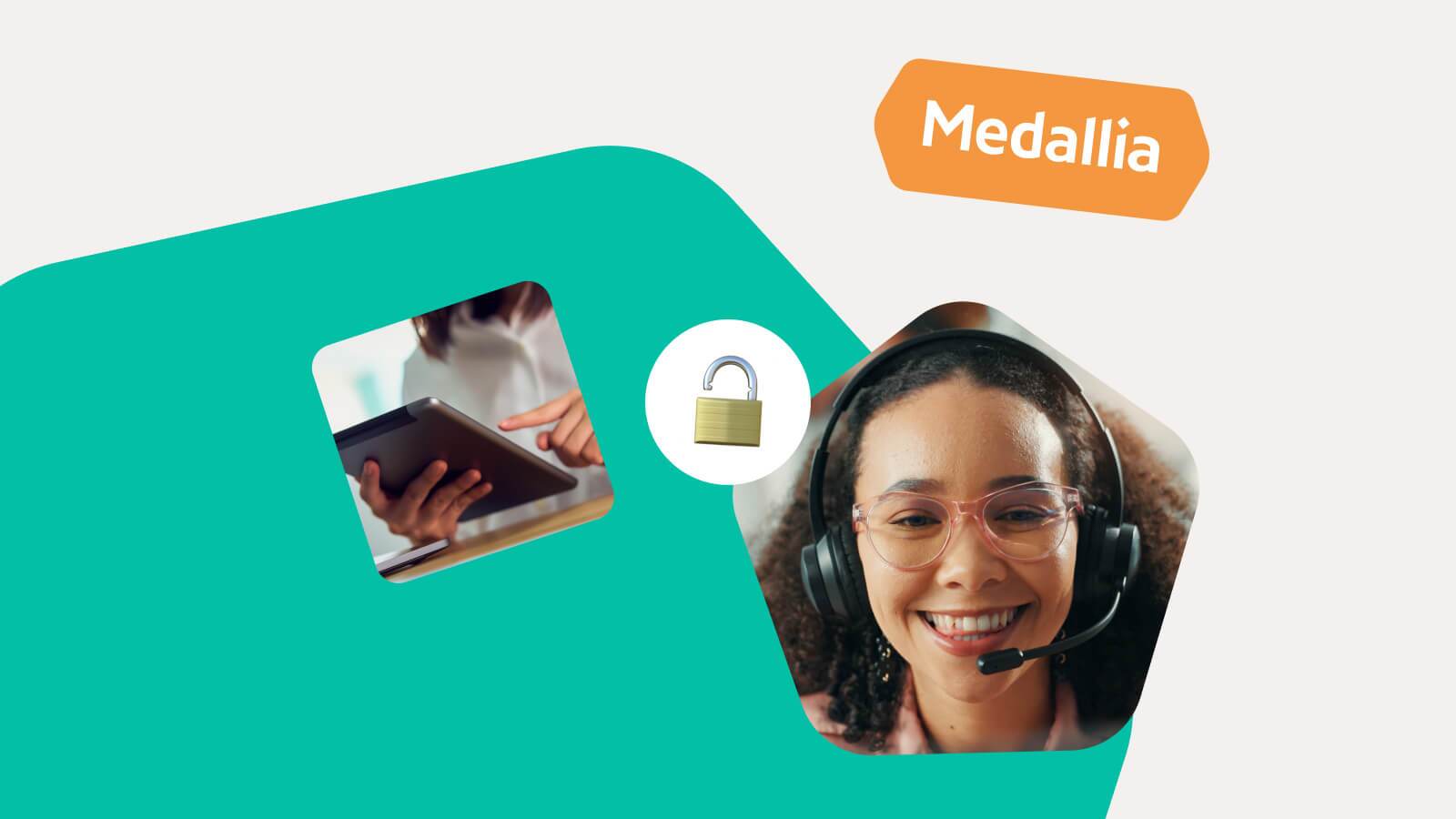10 Email Templates to Respond to Customer Complaints
October 18, 2023
Contact Center
Hard as it may be to calm and satisfy an angry customer over the phone, it’s much harder to do so by email. Here are 6 email templates to get a service interaction back on track.
Without the benefit of real-time give and take, agents who respond to angry emails are at a disadvantage. They can’t get a feel for the customer, use tone of voice to bring the temperature down, or steer the conversation.
If an email isn’t worded quite right, it can easily be misconstrued as cold, indifferent, or rude — and deal a fatal blow to the customer relationship.
When responding to angry emails, your agents will need to walk a very fine line.
- They’ll need to respond quickly, but in a way that projects warmth, concern, and a take-charge attitude.
- They’ll need to be succinct, while conveying their commitment to righting the wrong and explaining how the problem will be solved.
Here are six of the most common customer complaints your customer service agents may receive during their day, along with some sample email responses to customer complaints that reflect the best practices of leading brands.
10 Customer Response Templates for Emails
1. The Order Didn’t Arrive on Time
Customers put their faith in promised delivery dates, and assume brands are savvy enough to 1) accurately predict tracking, and 2) update customers about anticipated delays. If an order isn’t fulfilled in a timely way, it can spark a very angry response.
The agent’s first order of business: track the customer’s package. If it’s marked as delivered, ask the customer to confirm the address. Maybe the package was left in a different location than they’re used to, or was marked delivered but left on the truck – it happens. If the package is still in transit, try something like this.
Dear [First name],
I’m so sorry your order hasn’t arrived. I know how frustrating this must be.
I’ve tracked the package via [carrier], and it’s currently listed as “[status].” If you’d like to check on its progress, here’s the link you can use: [link]
Please contact me directly if your order hasn’t arrived within [time frame]. In the meantime, I will do everything I can to locate your package.
Once again, [First name], I sincerely apologize for the inconvenience.
Sincerely,
[Agent first name]
[Email/direct phone]
2. The Customer Received the Wrong Item(s)
Opening an eagerly awaited package and finding the wrong item inside is irritating, to say the least. It also creates more work for the customer. A great email response to these customer complaints addresses both pain points.
Dear [First name],
I’m so sorry we mixed up your order. I know a mistake like this can be very upsetting, especially at this time of year.
I’ve double checked your original order, and the correct items should arrive tomorrow via [carrier] (tracking number [#]). If you’d like to track the package, here’s the link you can use: [link].
I’ll follow up with you tomorrow to make sure you received the correct items. If you have any questions in the meantime, feel free to contact me directly.
We do have one small favor to ask. Could you please return the unwanted items within the next [#] days? There should be an adhesive prepaid return label inside the box. If not, just click this link, print the form, and attach it to the box. You can drop the box off at any [carrier] location (click here to find the one nearest you).
Once again, [First name], I sincerely apologize for the inconvenience.
Sincerely,
[Agent first name]
[Email/direct phone]
3. The Customer Had a Bad Experience in the Store
A rude or unhelpful associate, merchandise in complete disarray, endless checkout lines — a lot can go wrong in-store. If a customer emails a complaint, the agent’s response should include specific remedies, both at a high level and for the aggrieved customer. Here’s an example of a way to respond to an angry customer who had a bad experience.
Dear [First name],
I’m sorry you had such an unpleasant encounter with one of our associates earlier today. We try to make our customers’ shopping experience easy and enjoyable, and we hold our stores to a very high standard. In this case, we clearly fell short.
I’ve forwarded your complaint to the [location] store management team, as well as our corporate customer experience team. We will do everything we can to make sure this doesn’t happen again.
We’d also like to make it up to you by offering a [#]% discount on your next purchase in-store or online. Here’s a link to the coupon code, which you can print for in-store use: [link].
Once again, [First name], I apologize for our failure to serve you well. Thanks so much for letting us know. Your feedback is valuable to us.
Sincerely,
[Agent first name]
[Email/direct phone]
4. The Customer Is Getting Conflicting Answers
The website, store staff, and/or support reps aren’t on the same page, so the customer feels confused, frustrated — even misled. The agent’s job is to provide concrete information about policies, pricing, and/or product availability straight from the source and make clear the issue is being taken seriously. Here is a customer service email response sample for a customer who is getting conflicting answers.
Dear [First name],
I’m so sorry for the confusion and frustration this has caused. As much as we rely on technology and training to provide customers with consistent, up-to-date information, we deeply regret when breakdowns like this occur.
Here is the section of our return policy that addresses your original question about electronic product returns.
[Screen capture]
You can find our complete return policy here: [link]. Please feel free to reply to this email or call my direct line with any additional questions you might have.
Also, I’ve made our corporate customer experience team aware of this issue so they can address any underlying problems and ensure our customers always have the right information.
Once again, [First name], I apologize for our failure to serve you well. Thanks so much for letting us know. Your feedback is valuable to us.
Sincerely,
[Agent first name]
[Email/direct phone]
5. There Was No Response to the Customer’s Previous Email
Heavy email volumes can wreak havoc on response times. But that doesn’t mean much to customers who need help or answers fast. What would have been a fairly simple resolution is now a customer service failure. Empathy is so important here, as is a shared sense of urgency. Here is a sample response to customer complaints when there was no response to the previous email.
Dear [First name],
I’m so sorry for the delay in getting back to you. I understand your frustration. Your email needed and deserved a timely response.
As you requested, I’ve updated your payment settings and alerted our website team to the problem you’re having with your account management page. Please contact me directly if you experience any further problems on the site.
For inconveniencing you not once, but twice, we’d like to offer you a [#]% discount on your next purchase in store or online. Here’s a link to the coupon code, which you can print for in-store use: [link].
Once again, [First name], I apologize for the inconvenience. We will continue to do everything we can to speed up and improve our customer service delivery.
Sincerely,
[Agent first name]
[Email/direct phone]
6. The Customer Wants You to Make an Exception for Them
We’ve all been there — you need to return an item for a refund or exchange, and it sits beside your front door collecting dust. When you finally remember to drop it off, you find out that you missed the allotted return window. As an agent, you have to be prepared for how to make things right by the customer, while still upholding necessary company policies. Here’s a customer service email template for how to deal with customers asking to get around company policy.
Dear [First name],
I’m so sorry to hear that there were issues that prevented you from meeting the return window for [name of item].
Unfortunately, company policy clearly states that all returns and exchanges must be made within a 30-day window after your item has been received. For more insight, you can read our full return & exchange policy on our website here: [link].
While we can no longer accept the item/issue a product exchange, I can offer you a partial credit in the amount of $xx.xx. Please let me know if you would like to have this credit issued to your account.
Once again, I apologize for any inconvenience this may have caused. Please let me know how else I can help.
Sincerely,
[Agent first name]
[Email/direct phone]
7. The Customer is Experiencing Quality Issues
When a customer is disappointed with the quality of a product, it’s best to address their concerns promptly and empathetically. Here’s a template for responding to complaints about product quality that balances understanding with proactive problem-solving:
Dear [First name],
I’m sorry to hear that you’re not satisfied with the quality of [product name]. We aim for nothing less than top-notch quality, and it seems we’ve missed the mark in your case.
Thanks for bringing this to our attention! To help resolve this, could you please provide more details or photos of the issue? This will enable us to investigate further and ensure improvements are made.
In the meantime, I’d like to offer a replacement or a refund, whichever you prefer. Please let me know your choice, and we’ll proceed accordingly.
Your satisfaction is important to us, and we’re committed to making this right for you.
Sincerely,
[Agent first name]
[Email/direct phone]
8. The Customer Has Comments About Your Website or App
Feedback on your website or app is usually a goldmine of insights that can drive the evolution of your digital platforms. Each piece of feedback is an opportunity to enhance user experience and fine-tune functionality. When customers take the time to share their thoughts, respond in a way that acknowledges their effort and underscores your commitment to continuous improvement. Here’s an example of how to handle customer feedback on your digital channels, turning observations into action.
Dear [First name],
Thank you for taking the time to share your thoughts about our [website/app]. We’re always looking for ways to enhance our user experience, and your input is crucial in that process!
Could you please provide more specifics about the issues or suggestions you have? This will help our tech team understand and address your concerns more effectively.
We truly appreciate your willingness to help us improve. As a token of our gratitude, here’s a [discount/promo code] for your next purchase.
Thanks again for your valuable feedback.
Sincerely,
[Agent first name]
[Email/direct phone]
9. The Product Didn’t Meet Customer’s Expectations
Navigating the delicate situation when a product doesn’t live up to a customer’s expectations requires a blend of tact and action. It’s not just about acknowledging their disappointment; it’s about actively stepping into their shoes, understanding their perspective, and presenting a solution that not only resolves the issue but also rebuilds their trust in your brand. Here’s an email template that demonstrates empathy and commitment to making things right:
Dear [First name],
I’m sorry to hear that [product name] did not meet your expectations. We strive to ensure every customer is happy with their purchase, and it’s clear we have not lived up to this promise in your case.
To better assist you, could you please share specific details about how the product did not meet your expectations? We value your feedback and would like to understand more.
I’d like to offer you a [refund/replacement] or, if you prefer, store credit to choose another item that might be a better fit for your needs.
Your satisfaction is our top priority, and we’re here to ensure you have a positive experience with our products.
Sincerely,
[Agent first name]
[Email/direct phone]
10. The Customer Had Problems with the Delivery
Delivery issues can be a significant source of frustration for customers, and rightly so. Their anticipation of a product is met with disappointment, a situation that requires not just a prompt response but one that fully acknowledges and addresses their concerns. You’’ll want to write a response that combines urgency with empathy in these scenarios. Here’s an email example designed to effectively address delivery concerns, ensuring the customer feels heard and valued:
Dear [First name],
I apologize for the problems you’ve encountered with the delivery of your order. We understand how important timely delivery is, and it’s disappointing to hear we’ve fallen short.
To address this, I’ve contacted our delivery team to find out what went wrong and to prevent similar issues in the future.
In the meantime, as a gesture of our apology, I’d like to offer you a [percentage] discount on your next purchase. If there are any other ways we can make this up to you, please don’t hesitate to let me know.
We value your business and are committed to ensuring a smoother experience in the future.
Sincerely,
[Agent first name]
[Email/direct phone]
Key Actions for Positive Closure
No matter what your customers are angry about, your agents can bring positive closure if they observe some basic rules in their email responses.
- Take responsibility. Make sure the customer knows you understand the issue and where the brand failed.
- Acknowledge the customer’s feelings. Showing empathy helps to establish a connection and humanize the brand.
- Be the brand hero. Tell the customer in positive, specific terms what you’ve already done or what you intend to do. Answer questions directly and include helpful resources. Let the customer know you’re there for them if needed. When appropriate, offer the customer something of value.
- Close thoughtfully. Remind customers they are valued by the brand.
How formal or informal should your email responses be? That depends on your brand’s personality and customer base, as well as the nature and tone of the complaint. Just keep in mind that attempts to be clever could seem flippant to an angry customer. In most cases, you’ll want to play it straight.
Truly great customer service transcends any one channel. It’s an organizational mindset that guides every employee from the C-suite executive to the contact center agent.
Arm your agents with even more thoughtfully crafted templates. Access our complete guide, 10 Customer Service Email Templates Every Agent Needs, to set them up for success.







